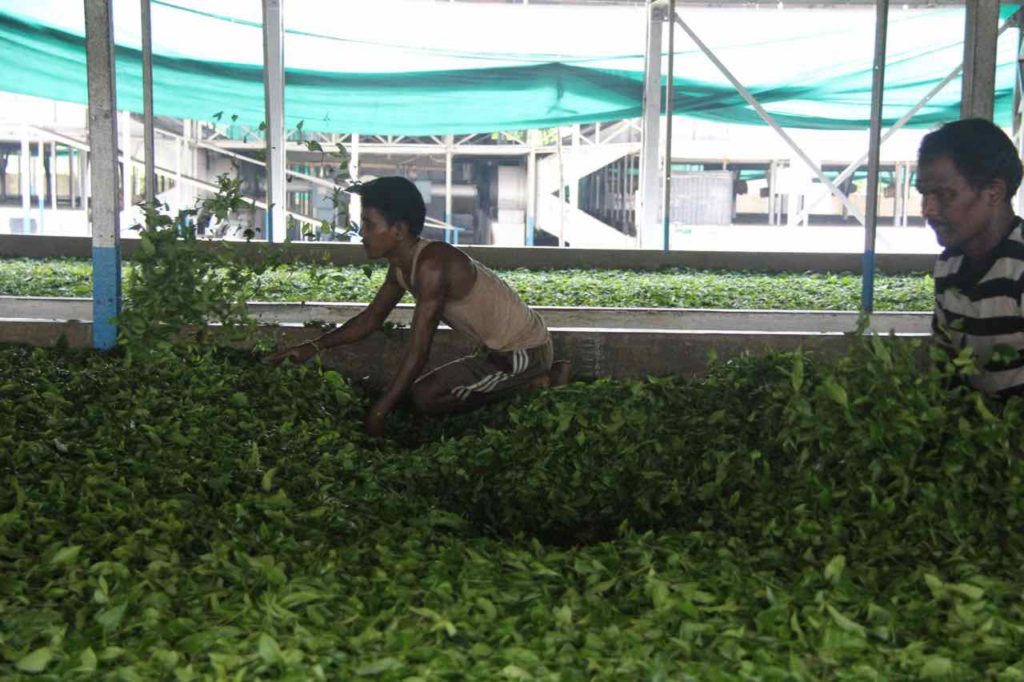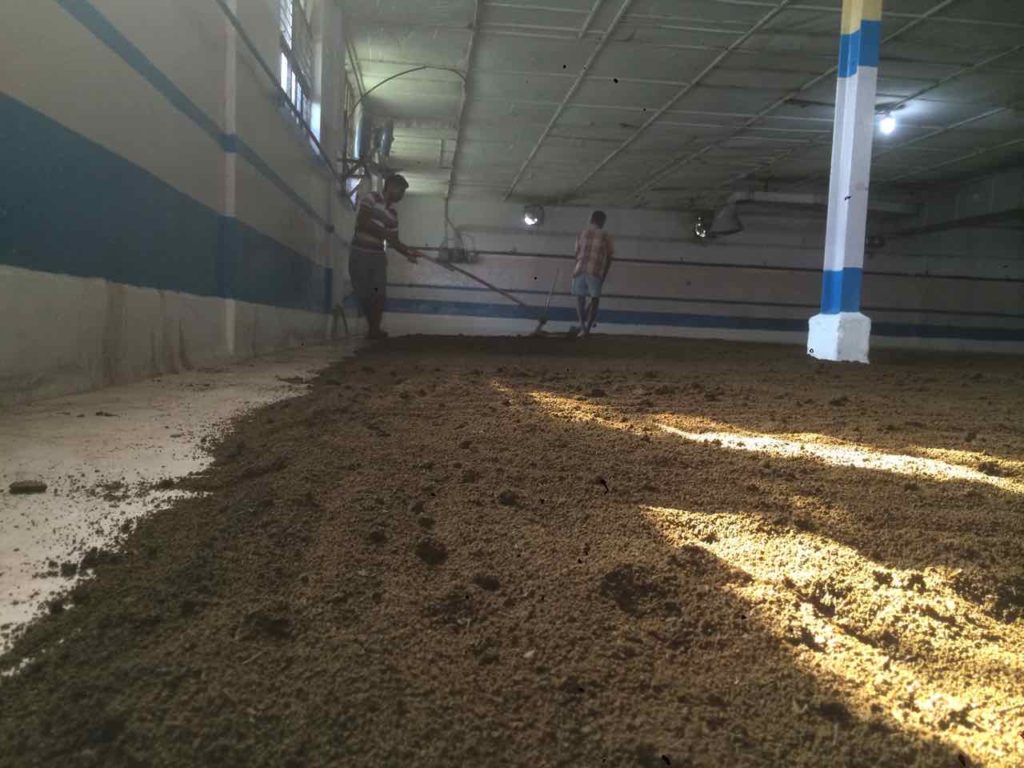CTC (Crush-Tear-Curl or Cut-Tear-Curl) is a commonly know term that is used to classify pellet shaped tea. CTC is also known as the “poor mans’s tea” as it is one of the least expensive types of teas. This type of tea is one of the most popular and widely used teas in the world as it holds a liquor (a tea term often used to describe the infusion of tea, or in simpler terms the color and taste of the tea) which makes it great to use in tea bags. Furthermore, these teas have a tremendous amount of caffeine which makes it a popular choice for bold teas; but don’t be fooled, a good quality CTC tea can fetch a fair price.
So, what is the process of manufacturing CTC tea? The first step is plucking the tea leaves. It is estimated that the most tender leaves on a tea bush are ready to be plucked every seven days, also referred to as a seven day round. While plucking, workers pick the light green shoots which have two leafs and a bud in the center of it. The workers are discouraged from picking the dark green leaves and stem of the leaves as it takes away from the tea quality. These leaves are then weighed and put on a transport vehicle and transported a short distance to the tea factory.
The second step involves the process of withering, in simple terms the water content of the leaves are brought down and a controlled oxidation of the leaves occur to develop the aroma, color and liquor of the tea. The tea leaves are gently placed on top of a mesh wire in a trough to wither or wilt for several hours. While the tea is withering workers take measurement every few hours and help in controlling the airflow, humidity and temperature for best possible results. The tea leaves are also gently rotated and fluffed so that the withering is done evenly.


The next step involves the cutting or crushing of the withered leaves. Once the leaves are withered well the leaves are brought and fed to a cutter which tears the leaves apart and is then fed through a conveyor belt to a set of rollers that cut the leaves smaller as they in-between the rollers. The rollers have teeth and aid in crushing the leaves to a smaller size and giving it a uniform size. It also breaks down the cell walls of these leaves which allow for the enzymes, oil, and water to be exposed to oxygen in the air to create a better liquor. This then is fed into a large open-ended rotary sifter called a googhi. The googhi is tilted at an angel and the revolutions per minute are controlled for the enzymes to mix well with small particles of tea and form a ball like structure.
Fermentation is the next step where this sea of green crushed/cut leaves change color to a reddish-brown after the fermentation is arrested. Back in the days, and even today in some of the older tea factories, the tea would be placed on a white floor which was in a room where the light, humidity, and the temperature was managed to allow for the oxidation or fermentation to take place. Some of the newer mechanized factories now have a machine where the tea is placed for the same process. Here the conditions can be better managed to produce the best results. Fermentation done right produces some fine teas.


Once the tea has been fermented well it is then placed in a dryer for the process of firing. The dryers are utilized to cook the tea to a crisp black from the inside out of each grain keeping in mind not to overcook or undercook it. Firing allows for the enzymes to form into the ball like shape of the tea leaves and also reduces the moisture content to below 3% to stop the oxidation process.
The final stage in the process is sorting and grading. In the sorting process the leaves are passed through sorting machines. These machines are responsible for removing metal particles, fibers, and tea waste from the tea while placing different sizes of tea in separate tea bins which are graded based on the size of the tea. The larger the size of the tea the less the caffeine content.
Each batch of tea that is manufactured has subtle differences as well as major differences because each step of the process has different elements which is why tea making is considered an art form by some.
